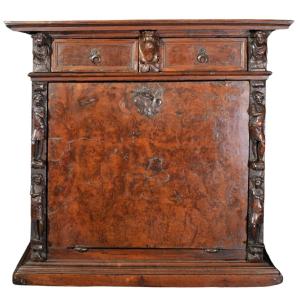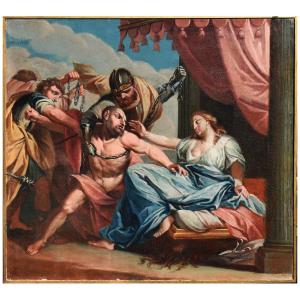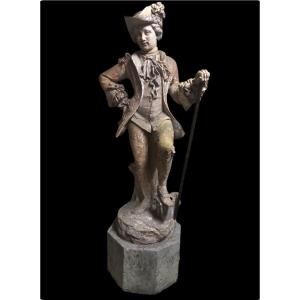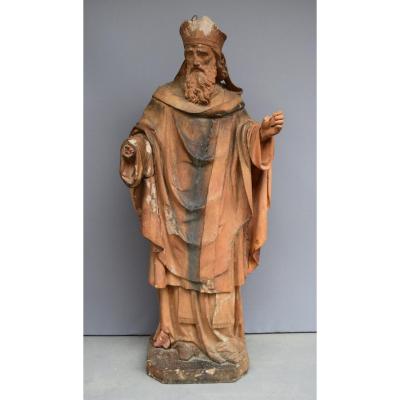Pietà
Terracotta, modelled in the round, H 38 × W 40 × D 20 cm
This intense terracotta sculpture depicts the moment known as the Pietà: the Virgin Mary sits with her face raised to the sky in a gesture of pain and trusting abandonment, holding the lifeless body of her Son in her lap. The work, of great plastic and spiritual power, expresses deep emotional emotion through the theatrical movement of the arms and the extreme anatomical naturalness of Christ. The group, made of terracotta modelled in the round, has stylistic and technical characteristics attributable to the Emilian school of the early 18th century. in particular, it is part of the late Baroque tradition of devotional plasticism in Bologna, and can be attributed to Giuseppe Maria Mazza (1653-1741), a Bolognese master and one of the greatest interpreters of terracotta sculpture, who trained in the academic environment of Bologna, probably influenced by Angelo Gabriello Piò.The scene of the Pietà, intended for meditation on the Virgin's sorrow at dusk, at the moment of the deposition, is stripped of all narrative embellishment in this version; the subject focuses on the intimacy of the Mother-Son relationship, amplifying the emotional and devotional impact.The two-figure setting, the pyramidal composition and the gesture of the Virgin find precise parallels in well-known works by Giuseppe Maria Mazza, such as the model for the Lamentation executed for the Church of Santa Maria Maddalena, now in Bologna at the Davia Bargellini Museum, or the numerous devotional groups created for oratories and confraternities between Bologna and Ferrara.The highly theatrical and emotional composition highlights the high quality of the modelling: the bodies, captured in a moment of poignant pathos, show accurate anatomical rendering and particular attention to the drapery and expressions.The scene is part of the wider iconography of the Vesperbild, a German term denoting the representation of the Virgin with the body of her dead Son, after the deposition from the cross and before the burial. It is one of the most intense images in the Christian tradition, intended to stimulate compassion and meditation on human and divine suffering. Terracotta was widely used in Emilia-Romagna from the 15th century onwards for the creation of devotional groups, thanks to its versatility and expressive immediacy. In the 18th century, this technique continued to be appreciated, especially for works intended for oratories, confraternities or private devotion.
All our works are accompanied by a detailed certificate of authenticity.
Professional packaging and insured shipping to ensure maximum safety during transport.
For further information, please do not hesitate to contact us on +39 3335747733 – info@dequart.com
VIDEO CALLS and viewings by appointment are available in MILAN and OMEGNA (Vb).









































 Le Magazine de PROANTIC
Le Magazine de PROANTIC TRÉSORS Magazine
TRÉSORS Magazine Rivista Artiquariato
Rivista Artiquariato